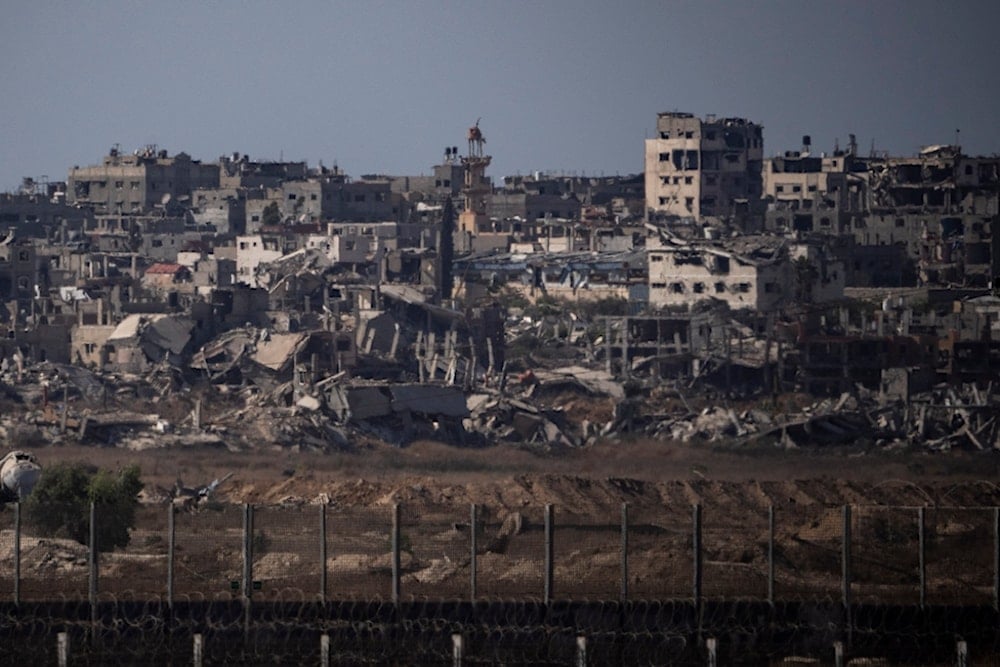'Actual topography has changed': UN on 40mln tons of Gaza war rubble
A UN assessment says 137,297 buildings in Gaza have been damaged, accounting for more than half of the total.
-

Destroyed buildings stand in the Gaza Strip, on Monday, July 8, 2024. (AP)
Clearing the Gaza Strip of nearly 40 million tons of rubble would take over 15 years and require more than one hundred lorries, costing between $500 million (£394 million) and $600 million, indicated a UN assessment, as reported by The Guardian.
Published last month by the UN Environment Programme, the assessment found that 137,297 buildings in Gaza have been damaged, accounting for more than half of the total. Of these, just over a quarter were completely destroyed, about a tenth severely damaged, and a third moderately damaged.
According to the assessment, massive landfill sites covering between 250 and 500 hectares (618 to 1,235 acres) would be needed to dispose of the rubble, depending on how much could be recycled.
The Guardian recalled that the UN Development Programme (UNDP) reported in May that rebuilding homes in Gaza could take until 2040 in the most optimistic scenario, with total reconstruction costs potentially reaching $40 billion.
This assessment, aimed at raising funds for early planning of Gaza's rehabilitation, also warned that the war could regress levels of health, education, and wealth to those of the year 1980, erasing 44 years of development.
“The damage to infrastructure is insane … In [the southern Gaza City] Khan Younis, there is not one building untouched,” a Gaza-based UN official told The Guardian last week.
“The actual topography has changed. There are hills where there were none. The 2,000lbs [907kg] bombs dropped [by Israel] are actually altering the landscape,” the official highlighted.
The report added that schools, health facilities, roads, sewers, and other critical infrastructure have all suffered significant damage as a result of the war.
The UNDP noted that the estimated cost of Gaza's reconstruction has doubled since January and continues to rise daily.
Gaza's Civil Defense agency has reported that the rubble is filled with unexploded ordnance, leading to "more than 10 explosions every week," causing additional casualties and loss of limbs.
Pehr Lodhammar, a former UN Mine Action Service chief for Iraq, pointed out in April that approximately 10% of fired weapons fail to detonate and must be removed by demining teams.
He added that 65% of the destroyed buildings in Gaza were residential and that clearing and rebuilding them would be slow and dangerous due to the threat of buried ordnance.
Read more: 'Israel' claims intensive war phase ended, says shifted to new goals

 3 Min Read
3 Min Read








